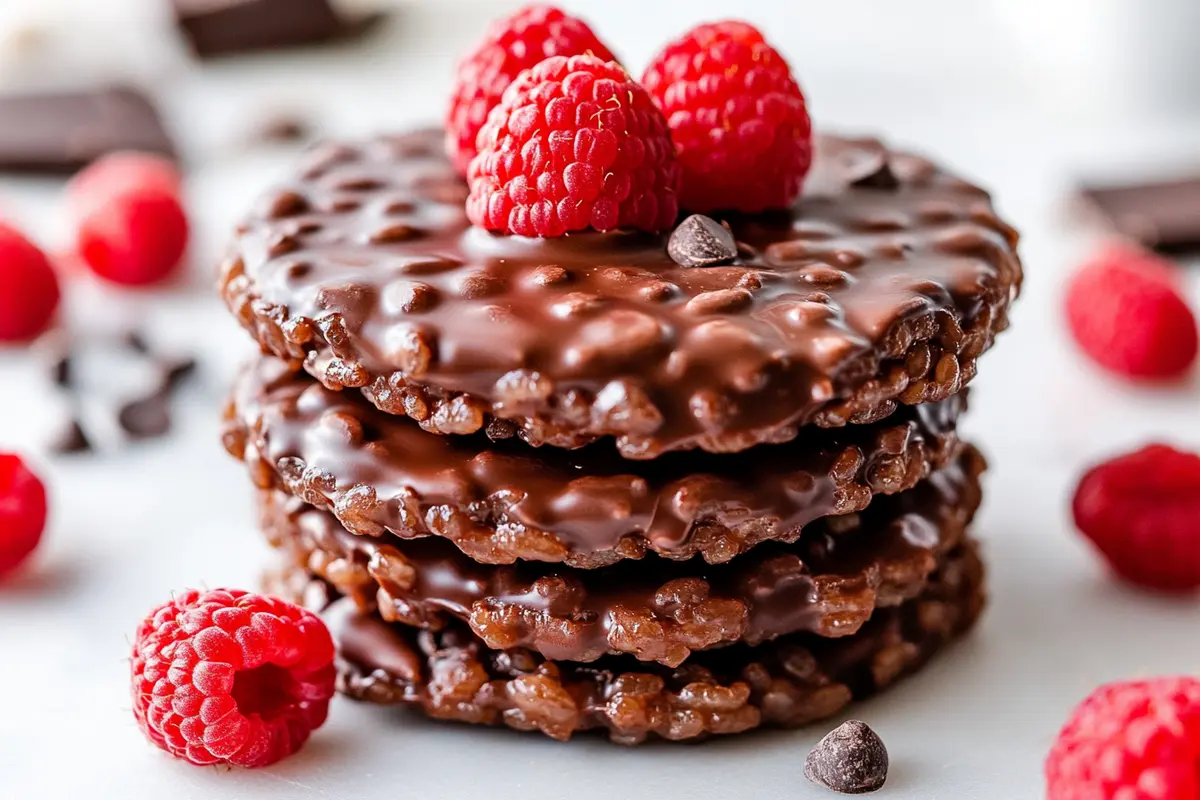Table of Contents
These popular snacks offer a lighter alternative to heavier desserts. Discover how chocolate rice cakes can fit into your lifestyle with our 7 essential secrets.
What Makes Chocolate Rice Cakes a Great Choice?
This type of snack combines the satisfying crunch of a rice cake with the rich flavor of chocolate. This makes them a tempting snack option. They are often lower in calories than traditional chocolate bars, making them a potentially smarter choice for those watching their weight.
Many brands offer variations of chocolate rice snacks, catering to different dietary needs. Some are gluten-free. Others are made with dark chocolate, which provides antioxidants. This allows you to enjoy a sweet treat while potentially reaping some health benefits.
The Nutritional Profile: What You Need to Know
Understanding the nutritional content of these treats is important. It helps you make informed decisions about your snacking habits. Typically, a single chocolate rice cake contains fewer calories compared to other processed snack foods.
However, it’s crucial to check the label. Some brands might add higher amounts of sugar or artificial ingredients to enhance flavor. Aim for options with minimal added sugars and natural ingredients. Reading the nutritional information is key to making a healthy choice.
Examining the Sugar Content
Pay close attention to the sugar content. High sugar intake can lead to unwanted weight gain and energy crashes. Some manufacturers use alternative sweeteners. However, moderation is still important.
Fiber and Macronutrients
While these snacks are not a primary source of fiber or protein, some varieties may offer a small amount. Consider pairing them with a source of protein or healthy fats. This will create a more balanced and satisfying snack.
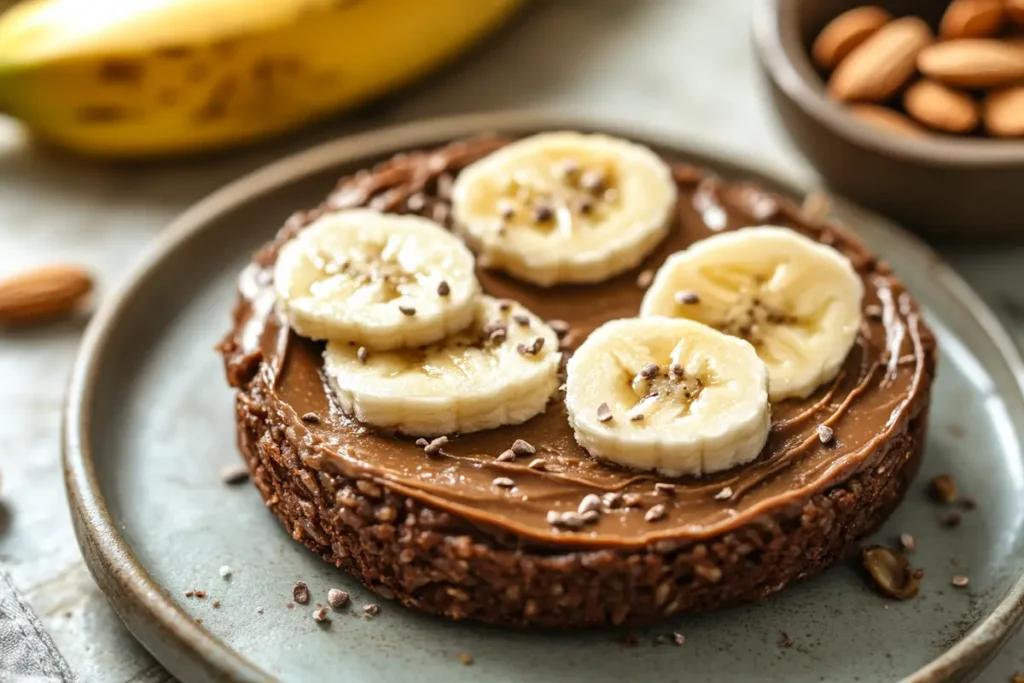
7 Secrets to Enjoying Chocolate Rice Cakes the Healthy Way
Here are seven essential tips for incorporating them into a healthy diet:
- Choose Wisely: Opt for brands that use dark chocolate. This usually means less sugar and more antioxidants.
- Portion Control: Stick to one or two servings. This prevents overconsumption of calories and sugar.
- Pair with Protein: Add a spoonful of nut butter or a slice of cheese. This will increase satiety and stabilize blood sugar levels.
- Read Labels Carefully: Look for low-sugar and high-fiber options. Avoid products with artificial additives.
- Homemade Toppings: Top them with fresh berries or a sprinkle of nuts for added nutrients and flavor.
- Mindful Snacking: Savor each bite and avoid eating in front of the TV. Pay attention to your body’s hunger cues.
- Combine with Exercise: Enjoy a chocolate rice cake as a post-workout treat to replenish energy stores.
Chocolate Rice Cakes as a Pre- or Post-Workout Snack
This snack choice can be a convenient source of carbohydrates before or after exercise. Before a workout, they provide a quick energy boost. After a workout, they help replenish glycogen stores.
Pairing them with a protein source enhances muscle recovery. Consider a protein shake or a handful of almonds to maximize the benefits. Timing your snack strategically can optimize your workout performance and recovery.
Pre-Workout Fuel
Eating one 30-60 minutes before exercise can provide sustained energy. The carbohydrates are easily digestible. This makes them a good choice for those with sensitive stomachs.
Post-Workout Recovery
Consuming a rice cake shortly after exercise helps restore depleted glycogen levels. The added sugar can assist in insulin release. This helps transport nutrients to muscles for repair and growth.
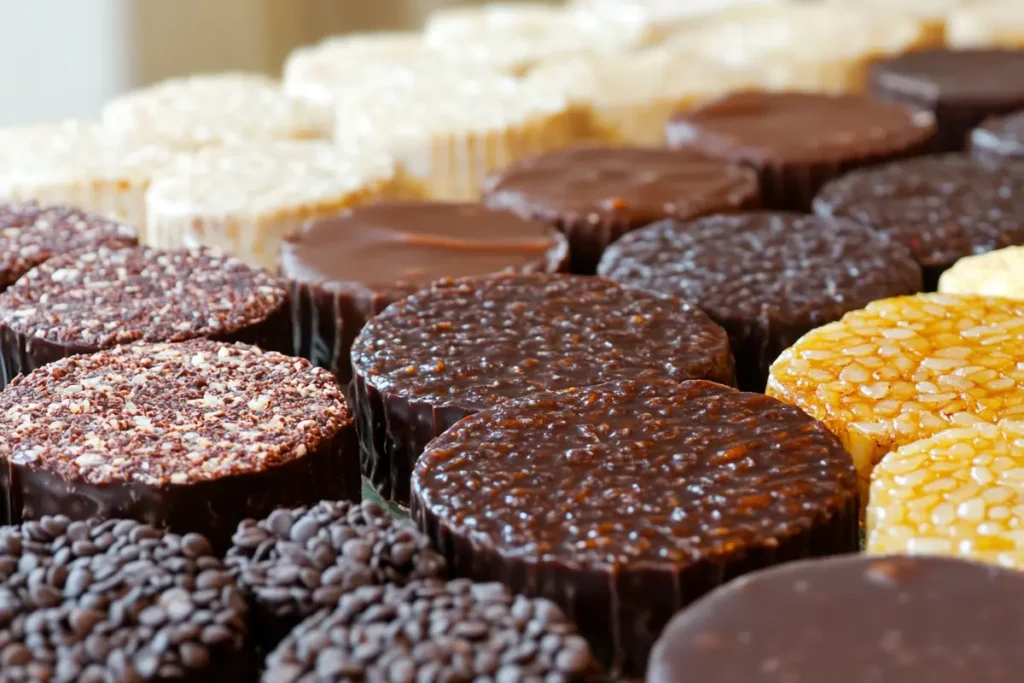
Exploring Different Flavors and Varieties
The market offers a wide array of flavors and varieties. Experimenting with different options can keep your snacking experience interesting. Look for flavors with natural ingredients and minimal additives.
Dark Chocolate Delight
Dark chocolate rice cakes are a popular choice. They contain more antioxidants than milk chocolate. They also often have a lower sugar content.
Peanut Butter Bliss
Combining chocolate and peanut butter is a classic pairing. Peanut butter flavored snacks offer a good balance of protein and healthy fats.
Caramel Craze
Caramel-flavored rice cakes provide a sweet and indulgent option. However, be mindful of the added sugar content.
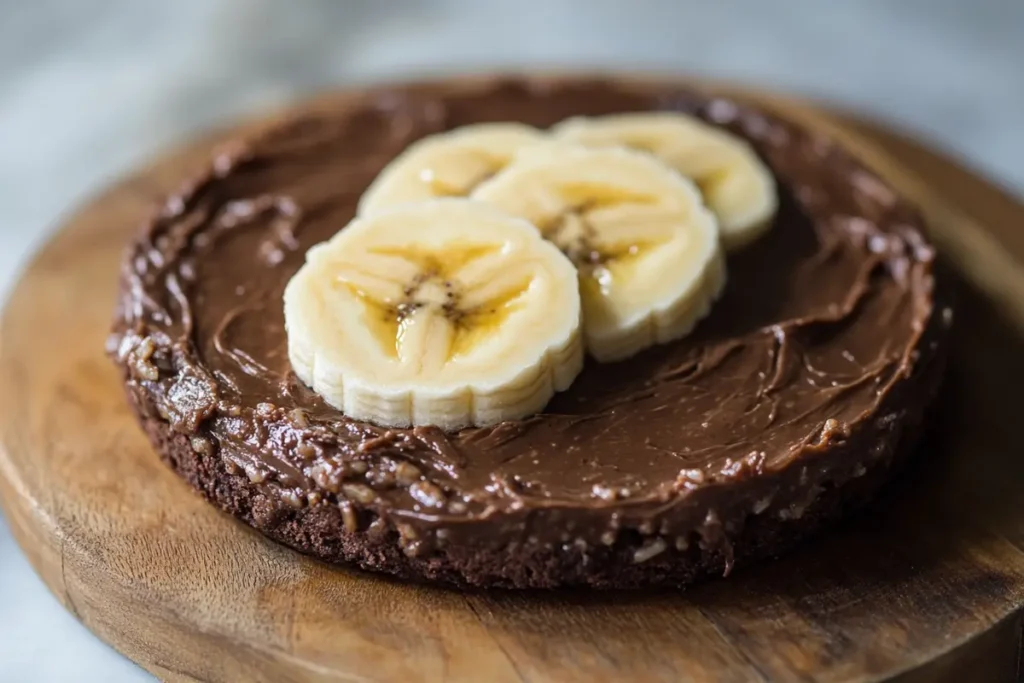
Making Your Own Healthy Chocolate Rice Cakes
Creating your own treats allows you to control the ingredients. This ensures a healthier and more personalized snack. There are many simple recipes available online.
Simple DIY Recipe
Melt dark chocolate and drizzle it over plain rice cakes. Add your favorite toppings such as nuts, seeds, or dried fruit. Allow the chocolate to set before enjoying your homemade creations.
Customizing Your Creations
Experiment with different chocolate types, such as white or milk chocolate. Use natural sweeteners like honey or maple syrup. Add spices like cinnamon or nutmeg for extra flavor.
Potential Drawbacks and Considerations
While they can be a healthy snack option, there are some potential drawbacks to consider. Be mindful of portion sizes. Check the ingredient list to avoid unhealthy additives.
Sodium Content
Some brands may add excessive amounts of sodium to their rice cakes. This can be problematic for people with high blood pressure. Always choose low-sodium options.
Artificial Sweeteners
Many sugar-free versions contain artificial sweeteners. Some people may experience digestive issues or other side effects from these ingredients.
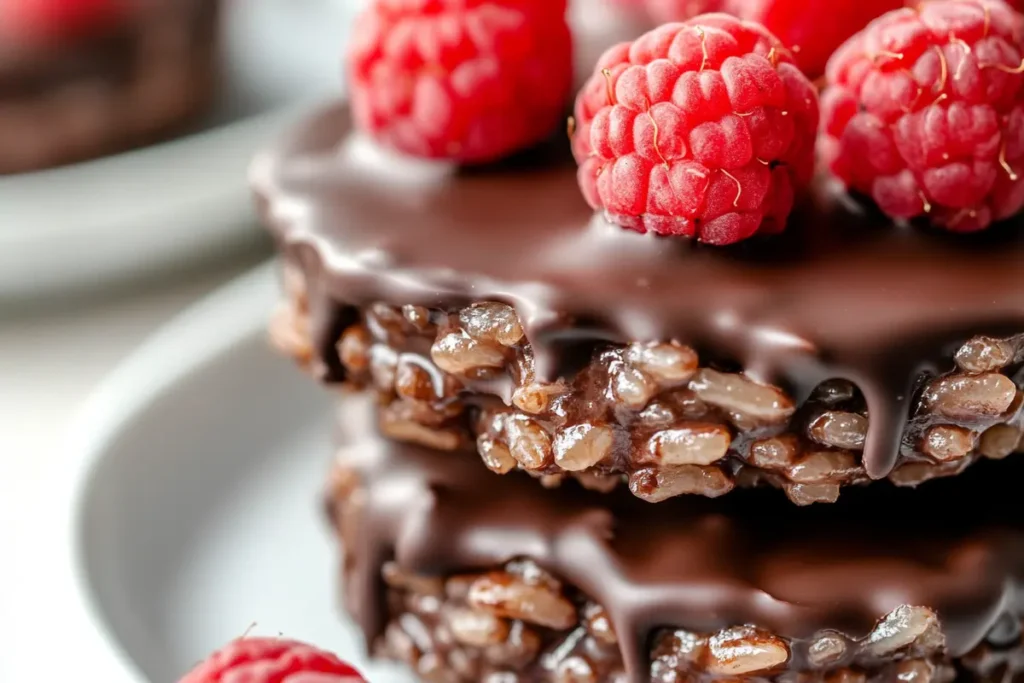
Chocolate Rice Cakes: A Deliciously Versatile Snack
This type of rice cake is incredibly versatile. They can be enjoyed on their own. They can be paired with a variety of toppings and spreads. They can even be used as a base for creative desserts.
Topping Ideas
Spread avocado and sprinkle sea salt on your snack. Add almond butter and sliced bananas. Top with greek yogurt and berries.
Dessert Creations
Use rice cakes as a base for mini pizzas. Make s’mores by topping with marshmallows and chocolate chips. Create layered parfaits with yogurt and granola.
Incorporating Chocolate Rice Cakes into a Balanced Diet Plan
This type of snack can be a part of a balanced diet. However, it’s important to view them as a treat rather than a staple food. A healthy diet includes a variety of fruits, vegetables, lean proteins, and whole grains.
Consider a treat an occasional indulgence. This helps you satisfy your sweet cravings without derailing your overall dietary goals. Combining them strategically with other nutritious foods enhances the nutritional value of your snack.
Sample Meal Plan Integration
Incorporate one as a dessert option after a balanced lunch. Pair it with a piece of fruit for added vitamins. Use as a post-workout alongside a protein shake. These are all examples of ways to integrate them into a diet plan.
Long-Term Diet Strategy
Consistently making healthy choices contributes to long-term wellness. Avoid relying solely on chocolate rice cakes as a primary snack. Opt for a variety of nutritious snacks such as nuts, yogurt, or vegetables with hummus.
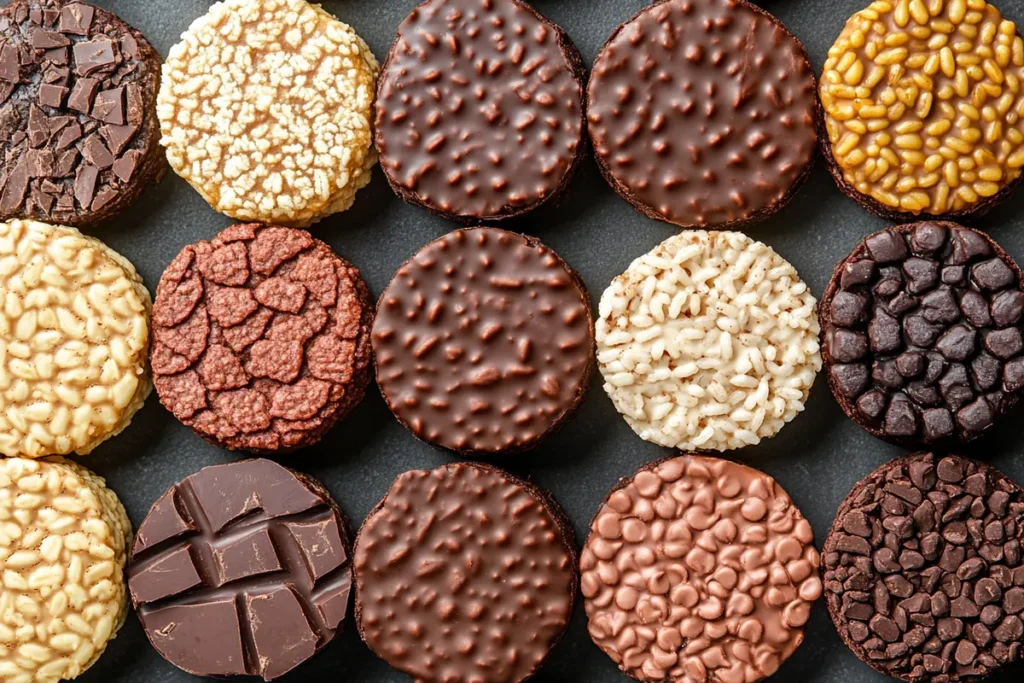
Chocolate Rice Cakes for Different Age Groups
The suitability varies depending on age and individual needs. While generally safe for most people, specific considerations apply to children and older adults.
Children and Teens
For children and teens, these can be an occasional treat. Monitor sugar intake. Encourage healthier snack options.
Older Adults
Older adults may find rice cakes easy to digest. This makes them a good option. Ensure adequate nutrient intake from other food sources.
Dispelling Common Myths About Chocolate Rice Cakes
Several misconceptions surround this snack. These myths may discourage people from enjoying them as part of a balanced diet. It’s important to separate fact from fiction.
Myth: They are Completely Healthy
While lower in calories compared to other snacks, they are not a nutritional powerhouse. They should be part of a balanced diet, not the entirety of it.
Myth: They are All Low in Sugar
Sugar content varies widely among different brands. Always check the label to ensure you’re making an informed choice.
Myth: They are Always Gluten-Free
While rice cakes are naturally gluten-free, some chocolate coatings may contain gluten. Always check the label if you have a gluten intolerance or allergy.
Understanding Glycemic Index and Load
Glycemic Index (GI) and Glycemic Load (GL) are important factors to consider when choosing snacks. They measure how quickly a food raises blood sugar levels.
Glycemic Index (GI)
The GI ranks foods on a scale of 0 to 100. Foods with a high GI cause a rapid spike in blood sugar. Foods with a low GI cause a more gradual increase.
Glycemic Load (GL)
The GL takes into account both the GI and the portion size of the food. It provides a more accurate measure of the impact on blood sugar.
GI and GL
Rice cakes generally have a high GI. However, the GL depends on the portion size. Pairing them with protein and fat can help lower the overall GL.
Addressing Common Allergies and Intolerances
It’s important to consider allergies and intolerances when choosing snacks. Many variations are free from common allergens like gluten, dairy, and nuts.
Gluten-Free Options
Look for versions specifically labeled as gluten-free. This ensures they are safe for people with celiac disease or gluten sensitivity.
Dairy-Free Options
Choose versions made with dairy-free chocolate. This is suitable for people with lactose intolerance or dairy allergies.
Nut-Free Options
If you have a nut allergy, check the ingredient list carefully. Avoid versions that contain nuts or are processed in facilities that handle nuts.
The Psychology of Snacking
Snacking is often influenced by psychological factors such as emotions, stress, and boredom. Understanding these factors can help you make healthier choices.
Emotional Eating
Avoid using food as a coping mechanism for stress or sadness. Find alternative ways to manage your emotions.
Mindless Snacking
Pay attention to your hunger cues and avoid eating out of boredom. Engage in activities that distract you from snacking.
Portion Control Strategies
Use smaller plates and pre-portion your snacks to avoid overeating. Focus on savoring each bite and eating slowly.
FAQ
What are the benefits?
Chocolate Rice Cakes can be a lower-calorie alternative to traditional chocolate snacks. Some offer antioxidants from dark chocolate, and they can provide a quick source of energy.
How can I choose the right ones?
Look for brands with low sugar content, dark chocolate, and minimal artificial ingredients. Check the nutritional label carefully and consider options with added fiber or protein.
Print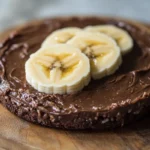
Dark Chocolate Sea Salt Rice Cakes
- Total Time: PT15M
- Yield: 4 servings
Description
Crispy and satisfying dark chocolate sea salt rice cakes are the perfect guilt-free treat. Easy to make with simple ingredients, they’re a quick and delicious snack or dessert that will satisfy your chocolate cravings.
Ingredients
-
4 plain rice cakes
-
100g (3.5 oz) dark chocolate (70% cacao or higher)
-
1 teaspoon coconut oil
-
Flaky sea salt, to taste
Instructions
-
Prepare the Chocolate: Break the dark chocolate into small pieces and place them in a heat-safe bowl. Add coconut oil.
-
Melt the Chocolate: Melt the chocolate and coconut oil using either a double boiler method or in the microwave.
-
Double Boiler: Place the bowl over a saucepan of simmering water, ensuring the bottom of the bowl doesn’t touch the water. Stir occasionally until the chocolate is completely melted and smooth.
-
Microwave: Microwave in 30-second intervals, stirring in between, until the chocolate is melted and smooth. Be careful not to overheat.
-
-
Coat the Rice Cakes: Place a rice cake on a wire rack set over a baking sheet lined with parchment paper. Use a spoon or spatula to evenly spread the melted chocolate over the top of the rice cake.
-
Sprinkle with Sea Salt: Immediately sprinkle flaky sea salt over the melted chocolate, to taste.
-
Set the Chocolate: Allow the chocolate to set completely. You can speed up the process by placing the rice cakes in the refrigerator for about 15-20 minutes.
-
Serve: Once the chocolate is set, enjoy your dark chocolate sea salt rice cakes!
Notes
-
Variations:
-
Add Nuts/Seeds: Sprinkle chopped nuts (almonds, walnuts, pecans) or seeds (sesame, chia) over the melted chocolate for added texture and nutrients.
-
Peanut Butter Drizzle: Drizzle melted peanut butter over the chocolate before it sets.
-
White Chocolate: Use melted white chocolate instead of dark chocolate.
-
Spice it Up: Add a pinch of chili powder to the melted chocolate for a spicy kick.
-
-
Tips for Preparation/Serving:
-
Use good quality chocolate for the best flavor.
-
Make sure the rice cakes are fresh and crispy.
-
Store the rice cakes in an airtight container at room temperature to maintain their crispness.
-
-
Remarks for Intolerances/Allergies:
-
Gluten-Free: This recipe is naturally gluten-free (ensure your chocolate is gluten-free).
-
Dairy-Free: Use dairy-free chocolate to make this recipe dairy-free.
-
Nut-Free: Omit nuts and seeds for a nut-free version.
-
-
Adjustment Tips for Taste Preferences:
-
For a sweeter flavor, use milk chocolate or add a touch of honey to the melted dark chocolate.
-
Adjust the amount of sea salt to your preference.
-
Use a different percentage of cacao in the chocolate for a more or less intense chocolate flavor.
-
- Prep Time: PT10M
- Cook Time: PT5M
- Category: Snack, Dessert
- Method: Melting, Spreading, Refrigeration (optional)
- Cuisine: Fusion, American
Nutrition
- Serving Size: 1/4 of recipe
- Calories: 175 kcal
- Sugar: 8 g
- Sodium: 50 mg
- Fat: 12 g
- Saturated Fat: 7 g
- Unsaturated Fat: 5 g
- Trans Fat: 0 g
- Carbohydrates: 15 g
- Fiber: 2 g
- Protein: 3 g
- Cholesterol: 0 mg
Keywords: Vegetarian, Gluten-Free, Dairy-Free.

